
Ok, you asked for it!
Prepare to be blown away!
Give us some info & we’ll get started!
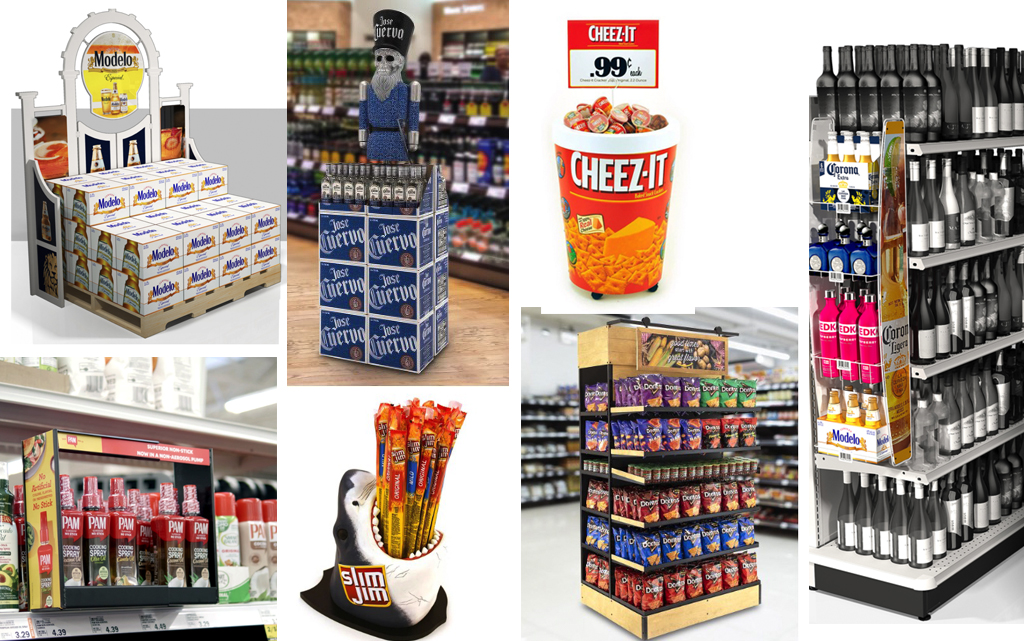
What exactly is a retail display and why do they matter? A retail display, also known as a POS Display (Point of Sales) or POP (Point of Purchase) display, is anything in a store that houses or promotes a product. Visual merchandising strategy focuses heavily on retail design and the appearance of merchandising displays in order to persuade shoppers to purchase specific products or increase visibility on brand messaging. As a consumer, we may not think about the details that go into in-store design, but there’s a whole science behind how consumers shop, how brands can creatively push their products and messaging with in-store displays.
Materials play a big role in retail displays, some popular materials for merchandising displays are wood, metal, acrylic, corrugate and iron. While corrugate tends to be less expensive than other materials, the recent transition to wood, metal and iron has given displays more depth and detail, allowing them to stand out. There is also an increased focus on sustainability, and therefore recycled materials and eco-friendly displays have grown in demand and use. In addition these displays often have interchangeable pieces to update graphics/product for holiday and seasonal use.
Brands are doing all they can to quickly capture the shopper’s attention and promote engagement, especially in the current market where time spent in retail environments is lessening. Phygital, the combination of the word physical and digital. This implies there is some sort of tangible but electronic/digital component integral to the display. Examples of this might be a motion-activated experience or a QR code that links to a web page and lets the shopper learn more about the product right on their smart-phone.
While innovation and engagement are key to the current retail display game, it’s equally important to understand the different types of displays and to know when to use each one. Just remember, this is just the tip of the iceberg when it comes to creative retail design. If you’re looking for a new innovative way to showcase your brand or product, we’d love to hear from you!
Here are the top seven most popular displays we’re going to cover:
1. End-Caps
2. Free-Standing Displays
3. Countertop Displays
4. Pallet Displays
5. Power Wing Display
6. Dump Bins
7. Inline Displays
End-caps are a product display placed at the end of each aisle which encourage impulse buying and give brands a competitive advantage by providing increased visibility. Picture this, you’re walking through the grocery store, you’ve grabbed everything on your list and you’re heading to the check-out counter. Then suddenly you’re faced with a Frito-Lays Potato Chip display at the end of an aisle. If chips weren’t on your list, chances are they are now. End-caps tend to be fixtures, permanent displays or semi-permanent displays and can be seen in tons of retail environments such as grocery stores, pharmacies, convenient stores, and big-box stores. This high traffic, large volume piece of retail is every brand’s dream placement.
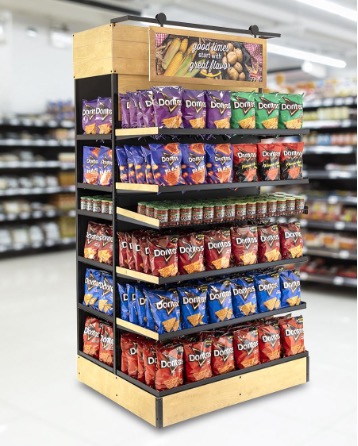
Free standing display units (FSDU) are exactly what their name would suggest. These displays stand directly on the ground throughout the store and are intended to draw attention to certain products and specific brand messaging. Free standing displays can be permanent displays, seasonal displays or temporary displays. Examples of a free-standing seasonal display would be a Jose Cuervo Holiday Nutcracker piece, or football themed Bud Light or Frito Lay display strategically placed by the store entrance right before the Super Bowl. Free-standing display units can also be seen in all types of retail environments such as grocery stores, pharmacies, convenient stores, big box stores and department stores.
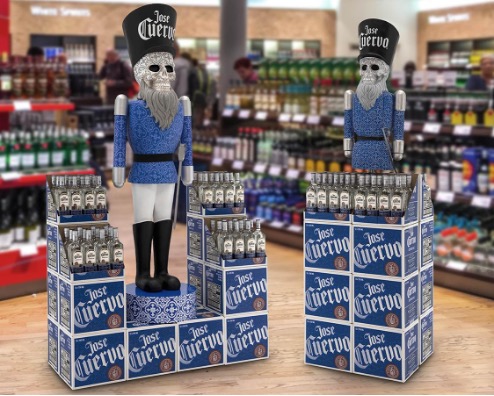
While we mentioned impulse shopping for end-caps, countertop displays focus even more on the theory that if we put the product directly in front of the consumer, they’re more likely to buy. Like free-standing floor displays, in an effort to engage consumers countertop displays tend to have higher impulse items and hold relevant products for the time of year. Usually, material is decided by the lifecycle of the display and type of store plus how long it’s expected to stay in-store. Popular materials for countertop displays are metal, wire, acrylic and vacuum formed pieces. Countertop displays can be found in virtually any retail environment, from your typical grocery store, big-box store, convenient stores and pharmacies, to department stores, small mom and pop retail settings and everything in between.
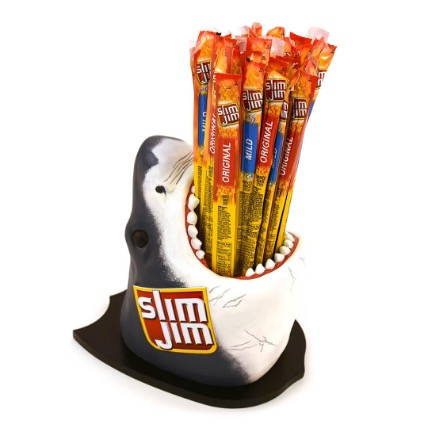
Pallet displays utilize a full-size pallet base, and displays product and messaging details printed on the display. These displays are very efficient as they are shipped as is with products already in-place, retailers just need to place the display where they want it and open up the appropriate sections to display the product. Due to this setup time savings, pallet displays tend to fall into the PDQ display category (pretty darn quick). Generally needing more floor space than other types of displays, pallet displays are very popular in big-box or department stores.
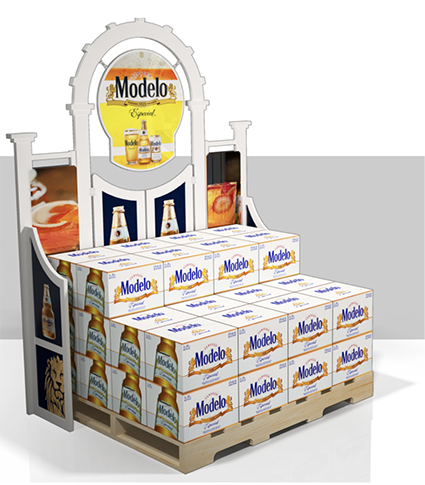
Power wing displays, also known as sidekick displays, are often attached to end-caps to promote relevant add-on items. Power wing displays can be very effective as they promote products that go well with the product it’s accompanying. The example you see above, reminds consumers who are purchasing wine, to not forget the beer and hard alcohol. Power wing displays are great for any type of retail environment, as they really encourage those relevant add-on purchases while maximizing floor space.
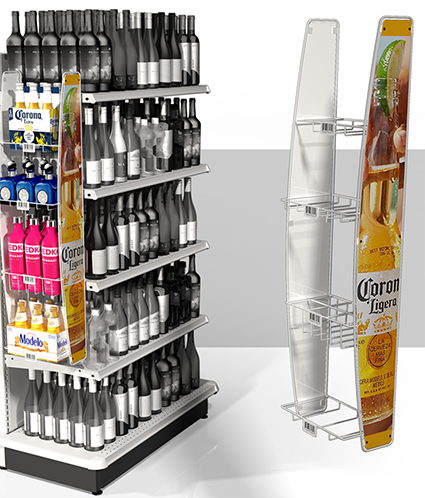
Dump bins are a free-standing floor display that essentially have a space filled where products are dropped in and easily grabbed by consumers. The large printed pieces allow for high visibility branding and messaging to attract customer’s attention quickly. These displays tend to be large to hold a lot of product, so they demand a decent amount of floor space. Dump bins can be seen in convenient stores, grocery stores, pharmacies and big-box stores.
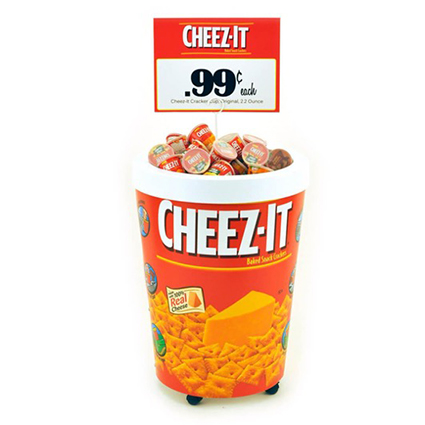
Where there is limited space, inline displays shine! While floor standing displays need an ample amount of space, inline displays are attached directly to aisle shelves. These efficient displays utilize a strategy called shelf management, where they essentially maximize existing shelf visibility to more efficiently stock products. Inline displays, also known as shelf displays, draw consumer attention to a brand or product and encourage them to grab your product over your competitor’s right nextdoor! Inline displays can be found anywhere there are shelves, so pretty much any retail environment you can think of!
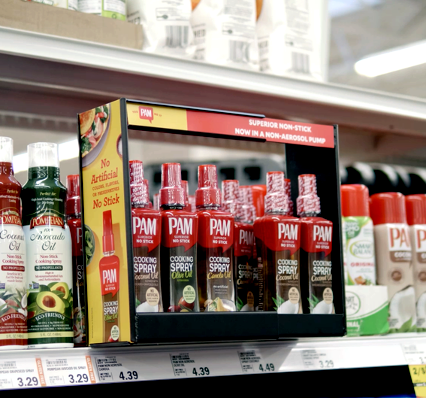
Now that we’ve gone into some detail of the top seven retail displays, next time you’re walking through a store, pay attention to what’s around you and how it impacts your shopping experience! Maybe we’re biased, but we think it’s pretty cool how retail environments can persuade and influence consumer behavior without us even noticing.
Now let’s talk about your brand and how our approach to creative retail displays will help build your brand’s visibility!
As a Project Manager for Bish Creative, this professional has ownership for all aspects of design, manufacturing, and delivery of displays customized to each client’s needs. Building relationships with the assigned clients (generally 4-6) is critical, as is detailed project management of up to 150 projects per year. The display business is core for Bish, and as such is in a critical position to drive success for the entire company. The Project Manager will be a member of the Director of Acct Mgmt Staff, which meets bi-weekly.
Designs interior spaces in new and renovated buildings; meets functional and aesthetic goals; researches and purchases furnishings and fittings; and establishes corporate or individual client base.
Bachelor’s or Master’s Degree in Interior Design, Architecture, Creativity, Spatial Skills, Attention to Detail, Multitasking, Problem Solving, Decision Making, Teamwork, Mathematics, Budgets, Research, Negotiation, Interpersonal Skills, Written and Verbal Communication, Knowledge of Local Codes.
As a Prototype Engineer / Model Maker, you will part of a highly creative and award-winning design studio. This professional’s top role is to build or modify prototypes from renderings or engineering drawings. Projects will be constructed of wood, metal, acrylic, corrugated, plastics, electronics, or a combination thereof. Associated with this work is the need to create packaging for safe transport, take professional photos, or develop instruction sheets for end use. The merchandising business is fast-paced, so flexibility to respond to short lead-times is critical as priorities change. The Model Maker must work very closely with our Conceptual Designers and Account Managers to bring projects to life. A well-built, professional prototype is many times the difference between getting a large order, or none at all. With the proper background, training, and job performance, career advancement is possible. This includes moves to Senior Model Maker, or Structural Designer. The Model Maker is a member of the VP of Designs staff and will work directly with each individual designer and their projects.